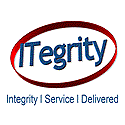
WashingtonExec 2016 Market Outlook Series
We look forward to a new year and new opportunities for innovation and growth in the government contracting community. This past year, we experienced an increased emphasis on cybersecurity, merger and acquisitions, the internet of things and doing more with less.
WashingtonExec reached out to those most knowledgeable and experienced in the federal contracting space. We asked executives in and around the beltway for insight regarding where they see the government contracting community headed in 2016. Topics discussed include M&A activity, cloud computing, privacy issues, data collection, healthcare IT, defense and more.
Second in the series is Steve Sarnecki, vice president of federal and public sector at OSIsoft and responsible for the direction and coordination of all OSIsoft sales in the public sector, including planning, pricing, market competitiveness, direct sales, distribution and channel strategy. Here are his insights:
In 2015, we saw predictive analytics take on a larger role in providing our federal government with actionable data to make informed decisions. Agency leaders, even the White House, are enlisting the services of Silicon Valley to offer consult on smart devices, cybersecurity, information technology (IT) convergence and other federal technology developments. These conversations are a step toward comprehensive strategies to establish a new level of security standards. For instance, having a data infrastructure with software that can monitor, manage and optimize sensitive data is critical to building resiliency within a network and mitigating risk. Agencies rely on software to detect threats, protect critical assets, manage data and increase process efficiency.
Mark my words – 2016 will be the year of actionable operational intelligence.
However, in a new year filled with unpredictable events, we must first consider the following areas when managing information to achieve maximum value.
Three areas of your data infrastructure to consider in 2016:
- Optimization
If you can’t measure your data, you can’t manage it. Having a standard monitoring system in place allows agencies to boost operations and possess a big-picture view of how your data is behaving.
Many Agencies have made investments in “fixes” for various problems. However, a few Agencies have taken the approach to baseline performance and assemble both a holistic understanding of the operation and an ability to drill down to real measurement data.
Examples that come to mind include diverse agencies and uses, such as the Bureau of Land Reclamation, U.S. Army facilities, and the Department of Energy’s Lawrence Livermore National Lab Datacenter, as all seek to control costs in their fixed installations by better managing energy and utilities. Each of these organizations is data-driven in their approach to optimization.
2. Compliance
Federal officials are deploying instrumental legislation, such as the Federal Information Security Modernization Act and the Federal Information Technology Reform Act, to modernize our legacy systems and eliminate risk. Regulatory compliance, internal controls, fiduciary responsibility and good stewardship of government resources are a few of many responsibilities federal officials bear. Therefore, it is necessary to assist officials in these critical roles and help set a benchmark for implementation, which leads to change.
More specifically, the government’s promulgation of compliance regulations in the pharmaceutical industries (i.e. FDA), environmental reporting (i.e. EPA) and even across the electric industry (i.e. FERC / NERC) are great examples of problems where compliance with regulatory requirements can actually help transform basic results. Rather than simply “complying with compliance,” there is an opportunity to use mandates to improve performance by enhancing underlying business analytics.
The nation’s electrical grids are perhaps the best example of a place where the need for various reporting data also transformed the operation of an interconnected enterprise. Improvements in real-time decision support within entities and across the broader community are enhanced by the secure sharing of time-sensitive data for compliance reporting and operation.
3. Security
Cybersecurity remains the number one concern for every federal chief experience officer. Real-time situational awareness of our nation’s critical infrastructure is more important now more than ever. With current trends, such as IT/operational technology (OT) convergence, that are increasingly connected to agency enterprise resource planning in order to increase efficiency and drive down unnecessary costs, agencies must also consider their security posture and internal controls.
However, security must be “baked in” from the beginning; it cannot be layered-on after the fact or result in an even more complex system that may itself be subject to failure. Providing for convergent monitoring of the actual IT infrastructures that monitor the OT sensor networks, at many industrial oil, gas, municipal water, and dangerous industrial operations provides a blueprint for government. Additionally, best practices already exist within industry and government that consolidate data and security while still providing time-sensitive, role-based data access (and not making “swiss cheese” of firewalls and security provisions in the process).
Companies who have invested in securely and actively monitoring their infrastructures, as PG&E did following a catastrophic failure in their gas pipeline network, are better equipped to avoid future failures.
Now is the time to fully commit to deploying sustainable, secure and forward-leaning solutions in critical infrastructures – not only to increase real-time situational awareness, but also to minimize risk and protect our nation’s infrastructure. Mark my words – 2016 will be the year of actionable operational intelligence.


